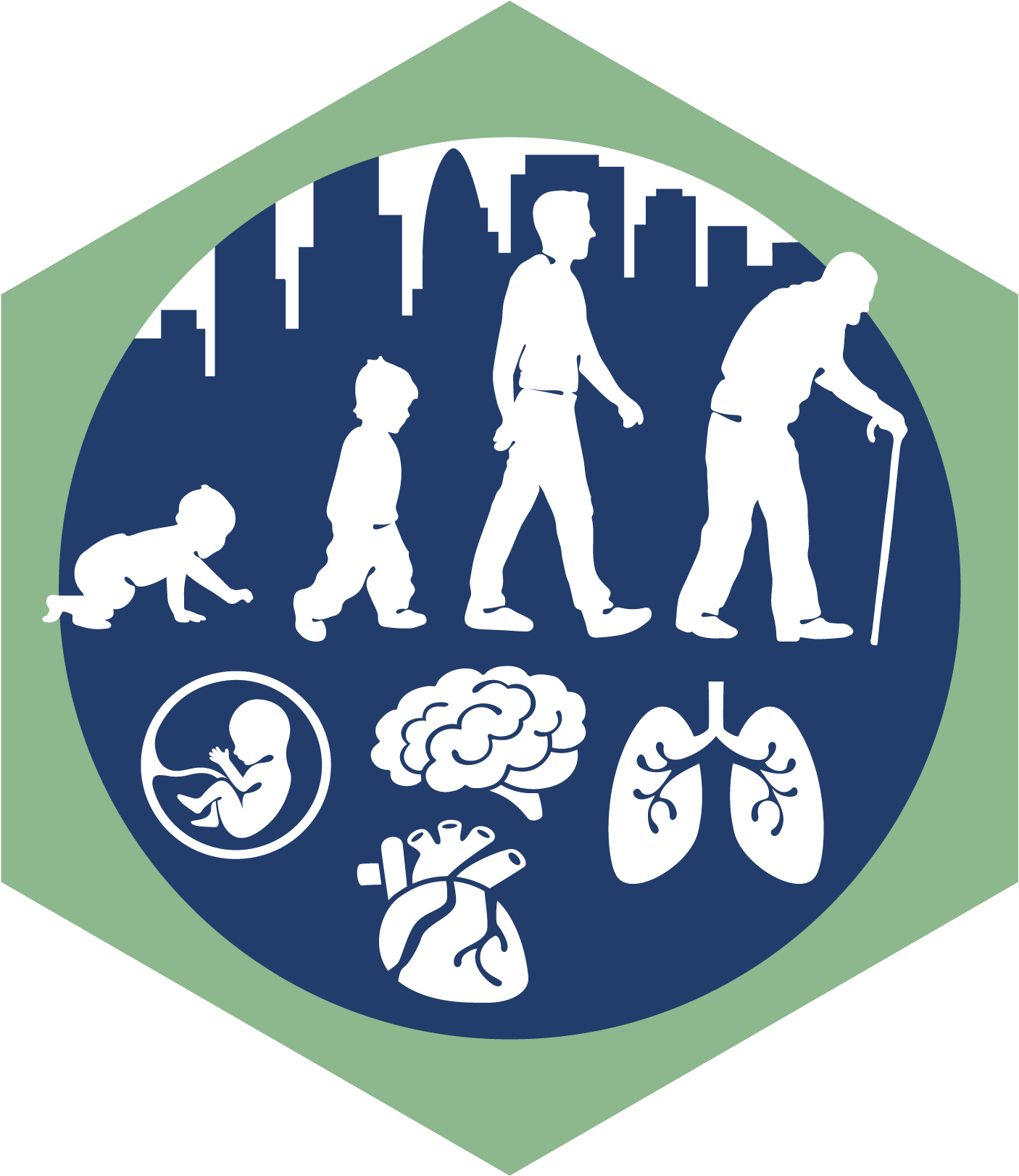Theme II - Air Pollution and Health
Overview
Substantial evidence links air pollution to health impacts at concentrations commonly encountered in the UK. Data is robust for the impacts of fine particulate matter (PM2.5) on cardiorespiratory diseases, but emerging evidence has demonstrated associations with adverse birth outcomes, sub-optimal developmental trajectories in children, the early aetiology of disease, impacts on mental health and dementia. If these observations can be shown to be robust and underpinned by causal pathways, they imply a substantial additional burden on the population's health, experienced across the life course. Addressing the evidence of the impact of air pollution on these emerging areas is the key aim of Theme II. We will do this by understanding the totality of air pollution exposures across the indoor to outdoor continuum in collaboration with themes I and III.

Theme Leads
Dr Helen Crabbe

Theme II Co-Lead
UK Health Security Agency
Helen Crabbe is a Senior Epidemiology Scientist in the Environmental Epidemiology Group at the UK Health Security Agency’s Centre for Radiation, Chemical and Environmental Hazards. She conducts epidemiological analysis of environmental exposures and effects on health including water contaminants, air pollution, land contamination, climate change and natural hazards. She develops and evaluates surveillance for environmental public health, including running the lead exposure in children surveillance system for England. She is a supervisor for the UK Field Epidemiology Training Programme and Honorary senior lecturer, fellow and researcher at several UK universities. She has a background in environmental health, environmental science and management, pollution control, GIS, spatial epidemiology, respiratory health, non-communicable diseases, EIA, and HIA.
EEH Themes:
Theme II Project 3: Indoor exposures and health
Theme II Project 5: Disentangling effects of NO2 and PM2.5 in time-series analysis
Publications:
Dr Ian Mudway

Theme II Co-Lead
Environmental Research Group, School of Public Health, Imperial College London
EEH Themes:
Theme I Project 3: Acute CO exposure
Theme II Project 2: Air pollution/impacts on the brain across the life course
Theme II Project 4: Exposures in transport microenvironments and their impact on health
Theme III Project 2: Health effects of non-combustion particles
Theme III Project 3: The role of the AhR in Asthma
Publications:
Theme II Projects
Project outline: Evidence on the impacts of air pollution on birth outcomes is accumulating, but results are inconclusive. Existing meta-analyses are now out of date, often of poor quality and the literature base has expanded rapidly in recent years. An updated meta-analysis addressing this area is urgently required.
Project outline: The impact of air pollution on dementia incidence has been identified as a priority area of research by COMEAP (Committee on the Medical Effects of Air Pollutants) and others. There is a need to understand the impact of long-term exposures and the underlying causal mechanisms of dementia risk. Impacts on early life cognitive development and mental health into adulthood have also been highlighted. Here we plan to address how air pollution mitigation measures impact on neurological endpoints, either reflecting planned interventions, such as London’s Ultra Low Emission Zone (ULEZ), or unplanned natural experiments, such as the impact of COVID-19 pandemic lockdown on air quality.
Project outline: Indoor air exposure models for studies of population health effects have been developed which include built environment characteristics, analysis of exposure measurement error, and measures of population movements (time activity patterns and population estimates). We will develop an integrated exposure model based on the above elements, for indoor air pollutants, namely CO and emerging chemicals (VOCs). The application of such models can be validated with measurements and then applied to epidemiological analyses, building on previous CO work. As this project is dependent on outputs from other projects underway, notably Theme I Project 6, activities in the first two years will focus on preparation and review of existing resources, with fieldwork and analysis following in Years 3-5
Project outline: This project will quantify exposures to primary particulate matter (from vehicular combustion and abrasion processes) and co-pollutant gases in transport microenvironments and assess their impact on health and acute adverse biological responses. It will initiate work investigating the acute effects of air pollution on the London Underground in sensitive sub-populations, as well as expand on previous personal monitoring studies highlighting the high exposures to diesel fumes experienced by professional drivers.
Project outline: Effects of NO2 and PM2.5 are difficult to disentangle but in recent years, with the introduction of particle traps, the ratio of NO2 and PM2.5 has been changing. If the associations for NO2 are an indicator for particulate matter, rather than a direct effect, the changing ratio should lead to a change in the time-series coefficient for NO2. The ratios with PM2.5 components may also have changed in different ways e.g. ultrafine particles dropped sharply with lowering sulphur content in fuel. This project complements the project on comparative toxicological potency of NO2 and PM in Theme III and extends previous HPRU work on measurement error and multi-pollutant models for NO2 and PM2.5. This project will dovetail with Theme III project 5 which is undertaking a similar project with laboratory based studies
Theme II Investigators
Professor Benjamin Barratt

Theme I Co-Lead
Environmental Research Group, School of Public Health, Imperial College London
Professor Ben Barratt is a Reader in Environmental Exposures & Public Health and Deputy Director of the Environmental Research Group, and Theme I Co-Lead for the HPRU in Environmental Exposures and Health.
EEH Themes:
Theme I Project 6: Indoor Air Pollution
Theme II Project 3: Indoor exposures and health
Theme II Project 4: Exposures in transport microenvironments and their impact on health
Publications:
Dr Sean Beevers

Investigator
Environmental Research Group, School of Public Health, Imperial College London
Dr Sean Beevers leads the Environmental Research Group’s Air Pollution Modelling team, and is a member of the MRC Centre for Environment and Health.
EEH Themes:
Theme II Project 1: Air pollution and adverse birth outcomes
Theme II Project 2: Air pollution/impacts on the brain across the life course
Theme IV Project 6: Air Pollution and Infertility
Publications:
Dr Rebecca Close

Investigator
UK Health Security Agency
Rebecca Close is a Senior Epidemiology Scientist in the Environmental Epidemiology Group at the UK Health Security Agency’s Radiation, Chemical and Environmental Hazards Directorate.
She works on the epidemiological analysis of environmental exposures and effects on health. She leads on the epidemiology of indoor air pollution for the team, helped to develop the team’s Environmental Public Health Surveillance System, is involved in the response and preparedness to environmental incidents, as well as teaching and many other research projects.
She is a supervisor for the UK Field Epidemiology Training Programme.
EEH Themes:
Dr Bethan Davies

Investigator
School of Public Health, Imperial College London
Dr Bethan Davies is a Senior Clinical Lecturer in the School of Public Health and an Honorary Consultant in Public Health Medicine at Imperial College Healthcare NHS Trust. Bethan is the Deputy Director of the UK Small Area Statistics Unit (SAHSU). She was previously the Deputy Director of the National Institute for Health and Care Research (NIHR) Imperial BRC Patient Experience Research Centre (PERC). Bethan’s research interest is in the use of routine healthcare data to build the evidence base for public health policy.
EEH Themes:
Publications:
Dr Atallah Elzein

Investigator
UK Health Security Agency
Dr Atallah Elzein carried out his PhD in chemistry and environmental sciences in CNRS/Orléans – France, where I studied the interaction of gas pollutants on the surface of mineral oxides. Following my PhD, I took up a postdoctoral position at ULCO University in France where I expanded my experience in atmospheric science and air pollution and investigated the VOCs reaction kinetics and product formation using simulation chamber. I moved to York in the UK in 2016 and took up a postdoctoral position in WACL at the University of York where I focused on studying the chemical composition of PM2.5 in Beijing and Delhi and health risk assessment from carcinogenic compounds. Currently working at the UK Health Security Agency in the department of toxicology in Chilton-Harwell Campus where I’m involved in different projects within the HPRU focusing on health protection from toxicants in indoor and outdoor air.
EEH Themes:
Theme I Project 1: Human Biomonitoring
Theme I Project 3: Acute CO exposure
Theme III Project 4: E-cigerettes toxicity and health effects from second-hand exposures
Theme IV Project 5: Understanding exposures to toxicants from waste fires
Publications:
Dr Dimitris Evangelopoulos

Investigator
Environmental Research Group, School of Public Health, Imperial College London
EEH Themes:
Theme II Project 5: Disentangling effects of NO2 and PM2.5 in time-series analysis
Publications:
Dr Karen Exley

Investigator
UK Health Security Agency
Her research focuses on environmental public health with specific interests in improving exposure and risk assessment of indoor and outdoor air pollution and environmental chemicals. It also includes evaluating the effectiveness of interventions for both indoor and outdoor air quality and translating this knowledge into actionable public health tools and guidance for national and local government and other stakeholders.
She is a member of the scientific secretariat for the Committee on the Medical Effects of Air Pollutants and was an expert committee member for the National Institute for Health and Care Research (NIHR) Excellence’s Quality Standard on air pollution. She is a Member of the UK Research & Innovation Strategic Priorities Fund’s Clean Air Steering Committee and a Member of the National Institute of Health Research’s Public Health Research Funding Committee.
EEH Themes:
Theme 2 Project 1: Air pollution and adverse birth outcomes
Theme 2 Project 5: Disentangling effects of NO2 and PM2.5 in time-series analysis
Publications:
Dr David Green

Theme IV Co-Lead
Environmental Research Group, School of Public Health, Imperial College London
Dr David Green is a Senior Research Fellow in the Environmental Research Group where he leads the Aerosol Science Team. Research interests focus on the measurement of particles and gases, and their use in source apportionment and health studies, to improve our understanding in both the urban and global environment.
EEH Themes:
Theme II Project 4: Exposures in transport microenvironments and their impact on health
Publications:
Dr Valentina Guercio

Investigator
UK Health Security Agency
Dr Valentina Guercio works at the UK Health Security Agency as a senior environmental scientist. After obtaining her PhD she worked for 6 years as a research fellow at the University of Milan and Mario Negri Institute in Milano. Her research interests are in the epidemiology of cancer and other chronic diseases and the identification of the major risk factors, including air pollution and environmental chemicals. This has been done by carrying out observational studies and systematic reviews and meta-analyses. She was also involved in national and international projects that aimed to combine the epidemiological and toxicological evidence in order to establish a causal relationship between exposures and outcomes.
EEH Themes:
Theme 2 Project 1: Air pollution and adverse birth outcomes
Theme 2 Project 2: Air Pollution/impacts on the brain across the life course
Theme IV Project 6: Air pollution and infertility
Publications:
Professor Klea Katsouyanni

Investigator
Environmental Research Group, School of Public Health, Imperial College London
Her research focuses on the health effects of environmental stressors, mainly outdoor air pollution. She has been the Coordinator of the EU network APHEA which provided European wide results on the short-term effects of air pollution and a Partner in several international projects investigating effects of exposure to air pollution and other environmental stressors, as well as their interactions, gene-environment interactions, air pollution effects in sensitive sub-populations, health impact assessment (e.g. PHEWE, AIRGENE, ESCAPE, ELAPSE, EuroHEAT, STEAM, EXHAUSTION, EXPANSE). Currently she is involved in the investigation of long-term effects of air pollution and the urban environment, the effects of ozone on children’s respiratory health, the effects of source-specific particles on health (such as forest fires and desert dust), the short-term effects of PM2.5 and ultrafine particles in Europe and the effects of extremely high temperatures on mortality.
She has been or is a member of several advisory committees (E.C., W.H.O. etc) in environmental health topics. For example, she participated in the 8-member Steering Committee of the REVIHAP and HRAPIE projects (2013) and was a member of the Committee on the revision of the WHO Air Quality Guidelines 2006. She was chair person of the Technical Working Group on Research Needs in the Framework of the European Environment and Health Strategy 2003-04. Member of the Oversight Committee of the NMMAPS project, funded by the US Health Effects Institute. Reviewer of E.C. applications for funding in Biomed and Environment Programmes under FP4, FP5, FP6 and FP7. Member of the ERC Panel for Starting and Consolidator Grants 2010, 2013, 2015 and 2017. She has more than 200 publications in peer reviewed journals and a h-index of 85.
In 2006 she became the recipient of the International Society for Environmental Epidemiology (ISEE) John Goldsmith award for sustained and outstanding contributions to the knowledge and practice of Environmental Epidemiology.
EEH Themes:
Theme II Project 1: Air pollution and adverse birth outcomes
Theme II Project 2: Air pollution/impacts on the brain across the life course
Theme II Project 5: Disentangling effects of NO2 and PM2.5 in time-series analysis
Publications:
Dr Emma Marczylo

Theme I Co-Lead
UK Health Security Agency
Dr Emma Marczylo is a Principal Toxicologist within the Radiation, Chemical and Environmental Hazards Directorate at the UK Health Security Agency with over 20 years’ postdoctoral experience in toxicological research disciplines, including cellular and molecular biology, epigenetics, toxicogenomics, in vitro and in vivo model systems and the microbiome. Her current research focuses on the potential toxicities of e-cigarettes and on characterising fungal bioaerosol exposures and their associated public health outcomes. As part of her role at RCE, Emma is also involved in academic teaching, expert workshops, regulatory and policy meetings, and providing advice to government departments and agencies. Emma co-leads Theme I: Assessment of Population Exposures within the Environmental Exposures and Health HPRU.
EEH Themes:
Theme I Project 5: Bioaerosol quantitation and effects
Theme II Project 4: Exposures in transport microenvironments and their impact on health
Theme IV Project 2: Microplastics and Health
Publications:
Dr Ian Mudway

Theme II Co-Lead
Environmental Research Group, School of Public Health, Imperial College London
EEH Themes:
Theme I Project 3: Acute CO exposure
Theme II Project 2: Air pollution/impacts on the brain across the life course
Theme II Project 4: Exposures in transport microenvironments and their impact on health
Theme III Project 2: Health effects of non-combustion particles
Theme III Project 3: The role of the AhR in Asthma
Publications:
Dr Fred Piel

Investigator
School of Public Health, Imperial College London
Dr Fred Piel’s research uses rigorous spatial quantitative methods to study a range of epidemiological questions related to non-communicable disease, global health and low- and middle-income countries. He is leading on disease specific projects looking at environment-health associations, including on cystic fibrosis and sickle cell disease, as well as on methodological projects such as a comparison of space-time methods for non-communicable disease surveillance; the development of a software for disease mapping and risk analysis, the Rapid Inquiry Facility 4.0; and a modelling of spatial uncertainty at small-area level with Emory and Harvard collaborators, funded by NIH. He is part of the UK Small Area Health Statistics Unit (SAHSU) and the MRC Centre for Environment & Health. Dr Piel is also the Director of the Joint Training Programme for the MRC Centre for Environment & Health, the National Institute for Health and Care Research NIHR HPRU in Environmental Exposures & Health, and the National Institute for Health and Care Research NIHR HPRU in Chemical & Radiation Threats & Hazards. I am part of the Postgraduate Research Studies Committee of the School of Public Health.
EEH Themes:
Theme I Project 5: Bioaerosol quantitation and effects
Theme II Project 3: Indoor exposures and health
Theme IV Project 1: Human health impacts from exposures to perfluorinated chemicals
Publications:
Dr Rachel B Smith

Investigator
Imperial College London
Rachel is a postdoctoral Research Associate in the Department of Epidemiology and Biostatistics at Imperial College London.
EEH Themes:
Theme II Project 1: Air pollution and adverse birth outcomes
Theme IV Project 6: Air pollution and infertility
Publications:
Professor Mirielle Toledano

Investigator
School of Public Health, Imperial College London
Professor Mirielle Toledano is an investigator on Theme II and Theme IV projects.
EEH Themes:
Theme II Project 2: Air pollution/impacts on the brain across the life course
theme IV Project 6: Air Pollution and Infertility
Publications:
Mr Dylan Wood

Investigator
Environmental Research Group, School of Public Health, Imperial College London
EEH Themes:
Theme II Project 2: Air Pollution/impacts on the brain across the life course


